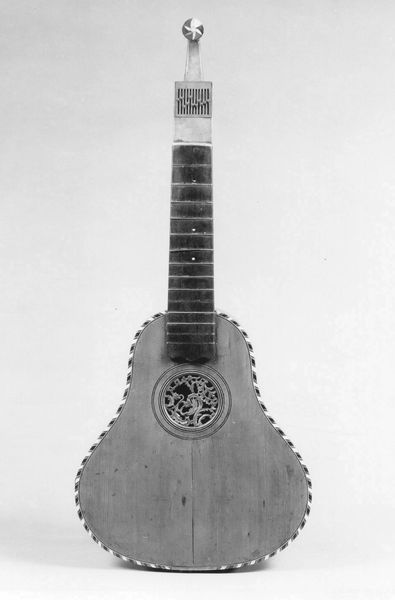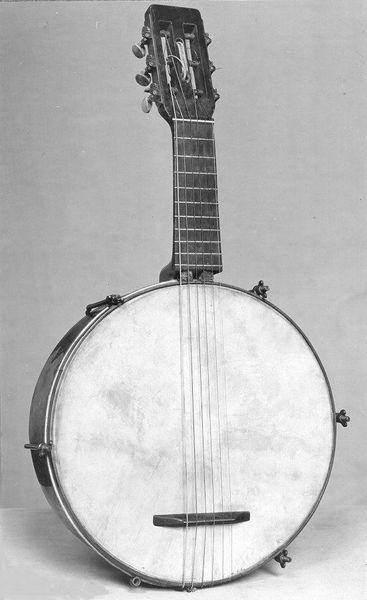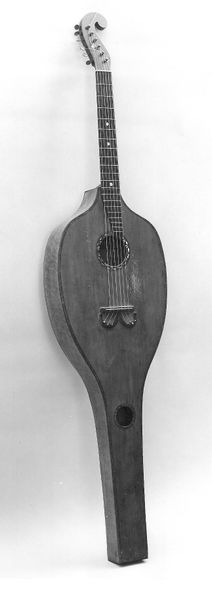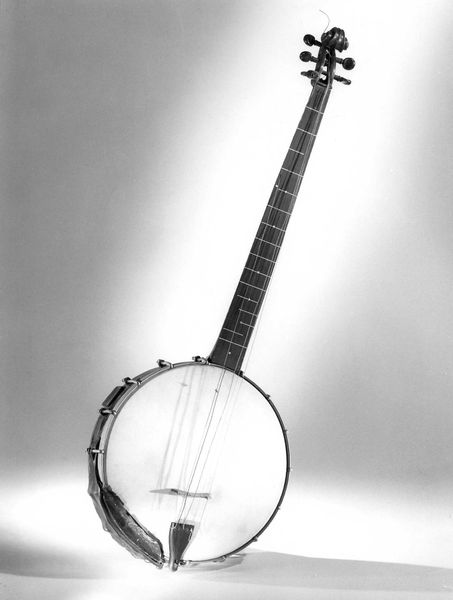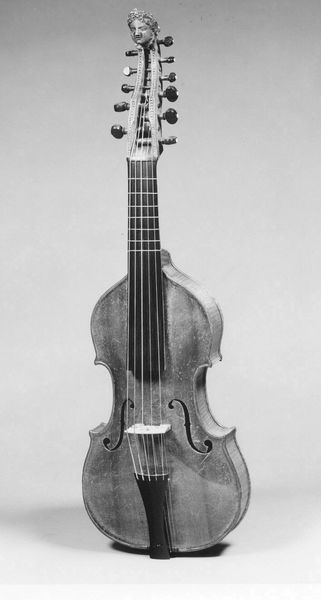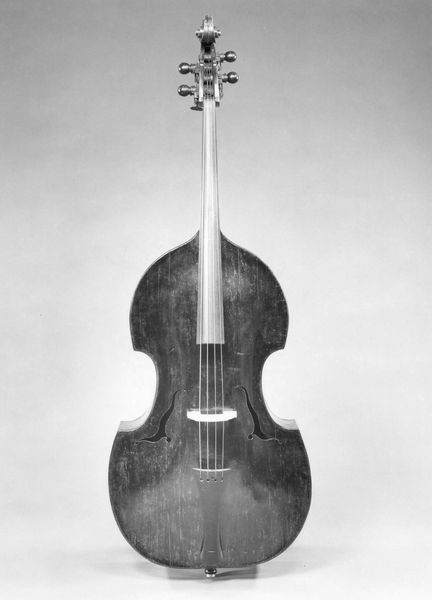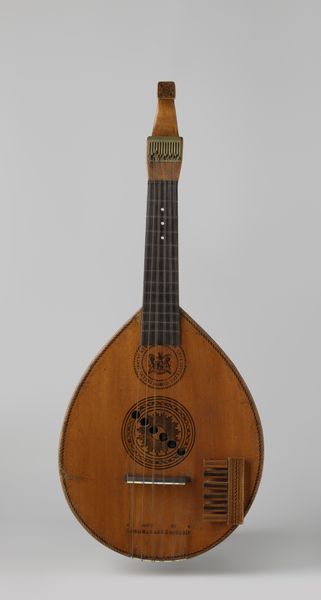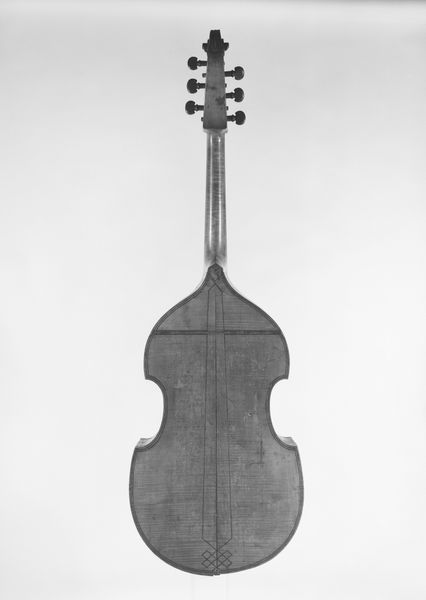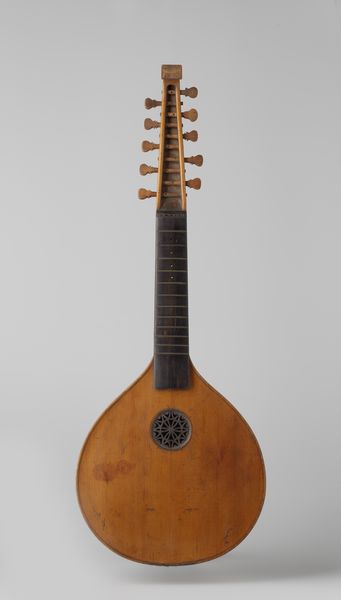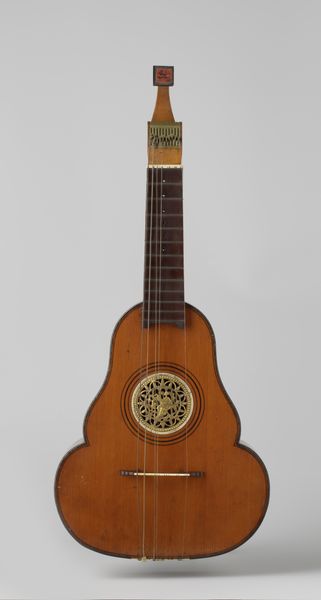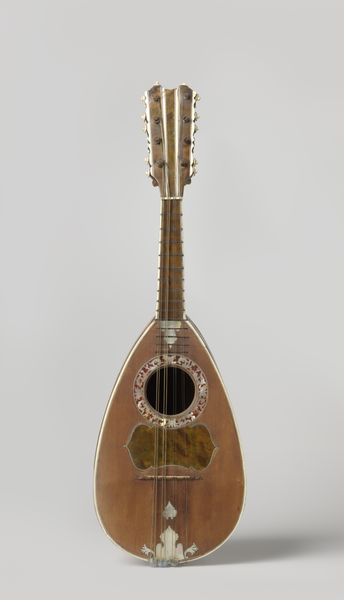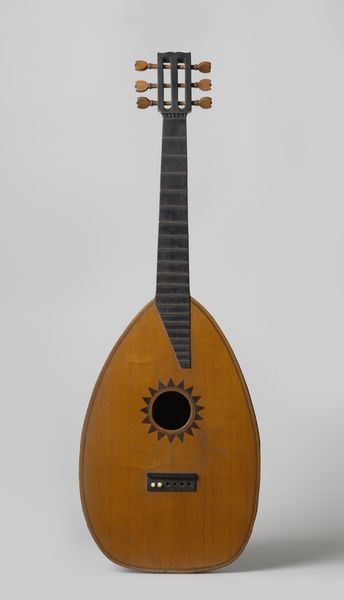
photography, wood
#
baroque
#
sculpture
#
photography
#
black and white
#
wood
#
musical-instrument
Dimensions: Total length: 70.4 cm Fingerboard length: 22.4 Fingerboard width, top/bottom: 4.5/5.75 Body length: 37.7 Max. body width: 30.2 Narrowest point (neck foot): 5.7 Body depth, neck: 9.4; foot and back: 6.9 Vibrating length of strings: ca. 43 cm (bridge is movable) Diameter of rosette to outer linked circle: 12.2 Bridge height: 18.5 mm
Copyright: Public Domain
Editor: Here we have an 18th-century keyed cittern, sometimes called an English Guitar. The Met owns this wooden instrument. It has such a delicate air, even in this black and white photograph. What do you see in this piece? Curator: Well, immediately, I see a tool for both aesthetic pleasure and, potentially, social mobility. Think about the cultural context: who had access to such finely crafted instruments in the 18th century? Was it a primarily gendered space? Editor: Probably wealthy women playing for small audiences at home? Curator: Exactly! And consider what that meant in terms of women’s agency. Music offered an avenue for expression, maybe even resistance, within a society that often restricted their voices. This wasn't just about pretty sounds, but also about performing identity and potentially pushing boundaries. Do you notice anything about the apparent condition? Editor: It seems slightly damaged. Curator: Yes. I wonder if this adds another layer to its story. Has it been silenced, perhaps mirroring the silencing of certain voices in history? Or does its survival, even imperfect, signify resilience? These objects carry so much more than just their physical presence. Editor: It’s incredible to consider how a musical instrument embodies a whole social history. I’ll never look at one the same way. Curator: That’s the power of engaging with art beyond the surface. It encourages us to critically examine the past and its relationship to our present.
Comments
No comments
Be the first to comment and join the conversation on the ultimate creative platform.
